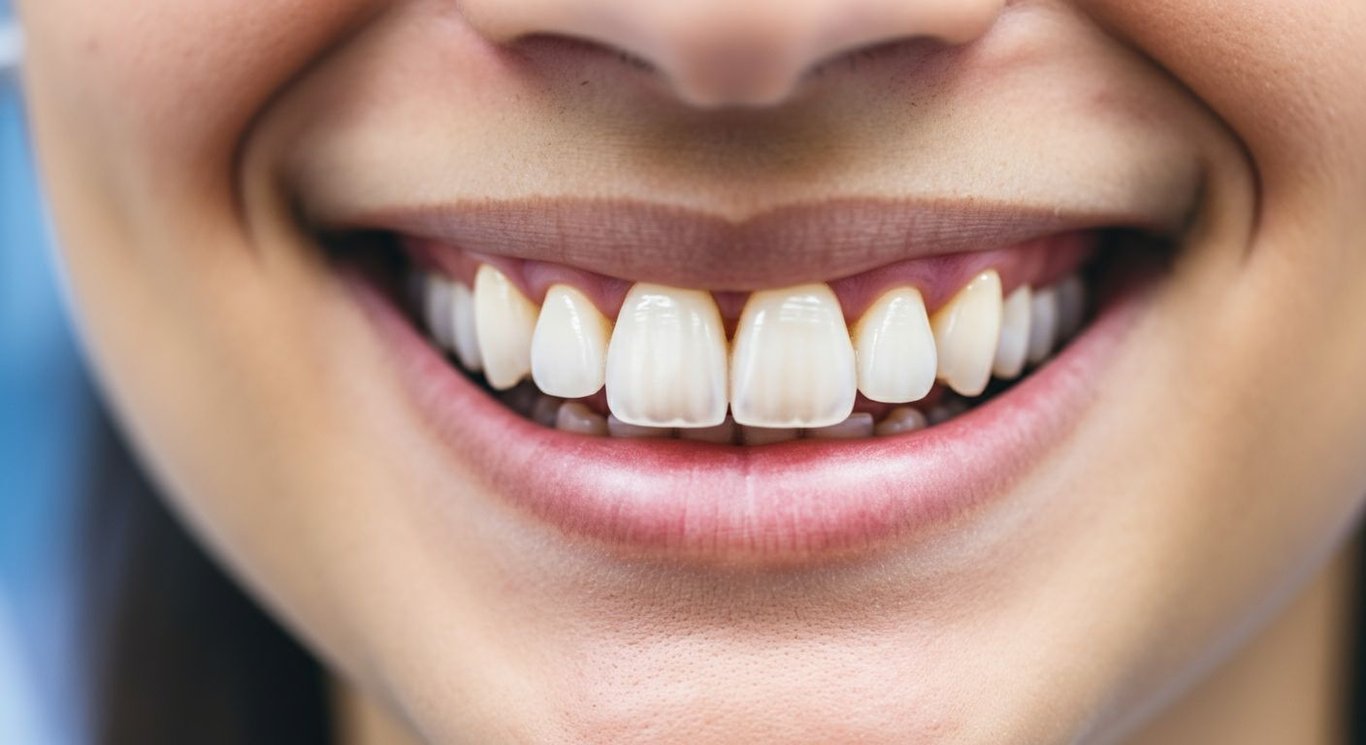Veneers: Crafting Your Dream Smile, Step-by-Step
Transform your smile with the power of veneers, from cosmetic enhancements to enduring dental beauty.
Transform your smile with veneers, showcasing the journey from imperfections to perfection. Learn about the types of veneers, their benefits, and how they can enhance your oral aesthetics magnificently.
Veneers Before & After: Witnessing the Stunning Transformations
Understanding the Transformative Power of Veneers
Veneers offer a remarkable solution for those seeking a significant improvement in their smile's appearance. Witnessing the before and after transformations is genuinely inspiring, showcasing how veneers can address a variety of dental imperfections. estethica, with its expert cosmetic dentistry, transforms smiles using the latest techniques with porcelain veneers.
Dental veneers are thin, custom-made shells designed to cover the front surface of teeth. These shells are typically crafted from porcelain or composite materials, each offering unique aesthetic and durability characteristics.
Consider a patient with severely discolored teeth due to tetracycline staining. After receiving porcelain veneers, their smile is strikingly brighter and more uniform. Another example involves someone with minor gaps between their front teeth.
Factors Influencing Veneer Transformations
- Material Choice: Porcelain veneers resist staining and mimic natural tooth appearance.
- Custom Design: Tailored shape and shade to match existing teeth and facial features.
- Professional Expertise: Precise application and fit essential for optimal results.
The Process of Veneer Application
- Initial Consultation: Discussion of goals, assessment of dental health, and treatment planning.
- Preparation: Minimal enamel removal to accommodate the veneer and ensure a seamless fit.
- Bonding: Careful adhesion of the veneer to the tooth surface using specialized dental adhesives.

Porcelain Veneers: Unveiling the Secret to a Natural-Looking Smile
Exploring the Natural Look and Feel of Porcelain Veneers
Porcelain veneers are crafted to perfection, offering a natural-looking solution to enhance your smile. Known for their durability and aesthetic appeal, porcelain veneers mimic the light-reflecting properties of natural teeth, ensuring a seamless blend with your dental structure. Dive deep into the procedure, care tips, and advantages of opting for porcelain veneers, and discover why they are a preferred choice in cosmetic dentistry.
One significant advantage of porcelain veneers lies in their ability to resist stains from coffee, tea, and other common culprits, maintaining their brilliance over time. For instance, a study showed that porcelain veneers retain their original color and luster significantly longer than composite veneers, often up to 10-15 years with proper care. Consider someone with minor chips or unevenness in their front teeth; porcelain veneers can provide a uniform, attractive smile that looks completely natural. Additionally, individuals who have undergone teeth whitening procedures but are not satisfied with the results may find porcelain veneers an ideal solution for achieving a permanently brighter smile.
Benefits of Choosing Porcelain Veneers
- Natural Appearance: Porcelain closely mimics the translucency and reflective qualities of natural teeth.
- Stain Resistance: Porcelain veneers resist staining better than composite options, maintaining a brighter smile.
- Durability: With proper care, porcelain veneers can last for many years, offering a long-term smile enhancement solution.
Porcelain Veneers: Application and Longevity
- Consultation and Assessment: Evaluating suitability and planning the veneer design with your dentist.
- Preparation and Impression: Preparing the tooth surface and taking precise impressions for custom fabrication.
- Bonding and Final Adjustments: Bonding the veneer to the tooth and making necessary adjustments for a perfect fit.

How Long Do Veneers Last? Maximizing Your Investment
Effective Strategies to Prolong Veneer Lifespan
Understanding the longevity of veneers is crucial in maximizing their benefits. Typically lasting between 10 to 15 years, veneers require careful maintenance and protection to extend their lifespan. Proper oral hygiene habits, such as regular brushing and flossing, play a significant role. Addressing issues like teeth grinding or clenching with protective measures also will extend their life. estethica emphasizes the importance of a holistic approach to veneer care, combining professional treatments with patient education for long-lasting results.
The durability of veneers largely depends on the material used and the daily habits of the individual. For instance, porcelain veneers, known for their resilience, can withstand daily wear and tear effectively when cared for properly. Proper maintenance involves avoiding excessive forces that could damage the veneers, such as biting on hard objects or using your teeth to open packages. Additionally, patients who maintain good dental hygiene and visit estethica for regular check-ups can significantly extend the life of their veneers.
Essential Tips for Maintaining Veneer Integrity
- Gentle Oral Hygiene: Use a soft-bristled toothbrush and non-abrasive toothpaste to prevent scratching the veneer surface.
- Avoid Harmful Habits: Refrain from biting on hard objects, such as ice, and using your teeth as tools.
- Night Guards for Grinding: If you grind your teeth at night, wear a night guard to protect your veneers from excessive pressure.
Key Factors Influencing Veneer Longevity
- Regular Dental Check-ups: Visiting your dentist every six months allows for early detection and management of potential issues.
- Professional Cleanings: Routine cleanings remove plaque and tartar that can compromise the bond between the veneer and tooth.
- Prompt Repairs: Addressing any chips or cracks quickly can prevent further damage and extend the veneer's lifespan.

Beyond Whitening: Exploring Cosmetic Dentistry with Veneers
Unveiling the Versatility of Veneers in Smile Design
Veneers are a powerful tool for smile makeovers, offering solutions beyond simple teeth whitening. They can address a wide range of cosmetic issues, including chipped, cracked, or misaligned teeth. By providing a uniform, aesthetically pleasing surface, veneers create a harmonious balance that enhances your overall facial appearance. At estethica, the focus is on providing treatments that exceed expectations, combining artistic skill with cutting-edge technology to deliver beautiful, natural-looking smiles with dental veneers.
The Transformative Applications of Veneers
- Correcting Misalignment: Veneers can mask minor orthodontic issues, providing a straighter-looking smile without braces.
- Closing Gaps: Small gaps between teeth can be easily closed with custom-fitted veneers.
- Repairing Damage: Veneers effectively cover chips, cracks, and other surface imperfections.
Achieving Comprehensive Smile Enhancements with Veneers
- Initial Assessment: A thorough evaluation of your dental health, along with a discussion of your aesthetic goals.
- Custom Design: Creating veneers that match your natural teeth and complement your facial features.
- Final Placement: Precise bonding of the veneers, ensuring a comfortable fit and natural appearance.
Porcelain Veneers: Crafting Natural-Looking Smiles with Durability and Stain Resistance
estethica utilizes porcelain veneers, custom-made shells designed to mimic the light-reflecting properties of natural teeth, ensuring a seamless blend with your dental structure. Expert cosmetic dentists precisely apply and fit porcelain veneers, tailored in shape and shade to match existing teeth and facial features.
Led by cosmetic dentistry experts, estethica offers comprehensive veneer treatments. The selection of high-quality materials, such as porcelain, ensures optimal aesthetic results and long-term durability for smile transformations.
Holistic Approach to Veneer Care Ensuring Long-Lasting Results Through Patient Education
estethica emphasizes the importance of a holistic approach to veneer care, combining professional treatments with patient education. Comprehensive consultations and precise veneer placements ensure optimal comfort, aesthetics and long-term satisfaction.
Satisfied patients at estethica report transformative improvements in their smile aesthetics and renewed confidence. With personalized care strategies our team provides long-term support to ensure lasting veneer integrity and patient satisfaction.
Frequently Asked Questions
What are dental veneers and what imperfections can they address?
How do porcelain veneers differ from other cosmetic dentistry options like teeth whitening?
How long do veneers typically last, and what steps can I take to maximize their lifespan?
Are porcelain veneers stain-resistant, and how do they maintain their natural appearance over time?
Achieve your aesthetic goals with estethica's personalized treatments and expert care.
📞 Schedule Your Free Consultation!